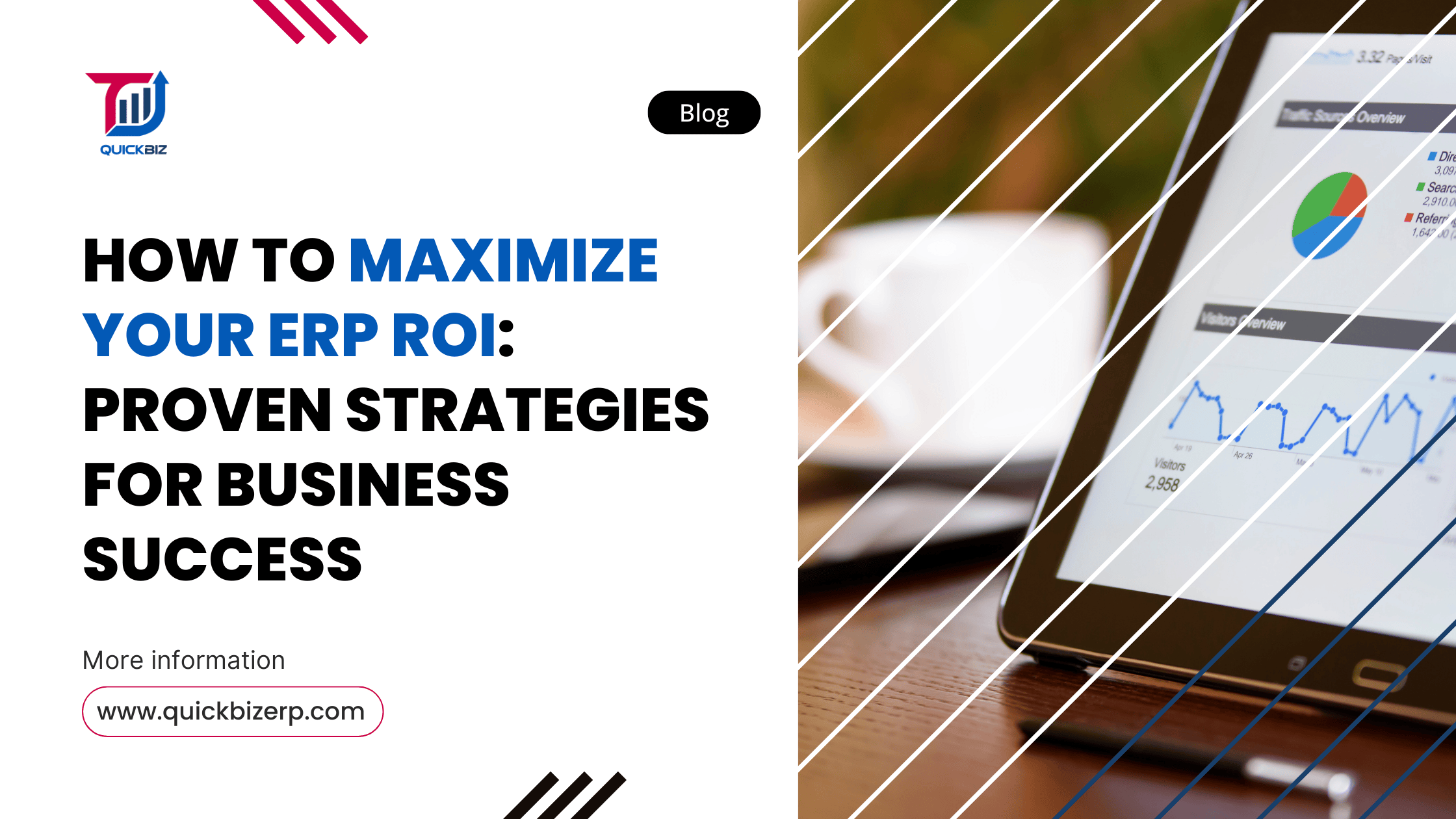How to Maximize Your ERP ROI: Proven Strategies for Business Success

Introduction
Investing in an Enterprise Resource Planning (ERP) system is a strategic decision to drive business efficiency and streamline operations. However, the actual return on investment (ROI) depends on how well the system is implemented, maintained, and utilized. Despite its potential, many businesses face challenges in realizing the full value of their ERP investments. This blog offers actionable insights to maximize ERP ROI, helping your business achieve measurable success and sustained growth.
Understanding ERP ROI
What is ERP ROI?
ERP ROI measures the financial and operational benefits derived from implementing and maintaining an ERP system compared to its cost. It highlights the system’s value in improving processes, reducing costs, and driving revenue growth.
Key Metrics to Measure ERP ROI:
- Cost Savings: Reduction in operational expenses and manual labor.
- Process Efficiency: Improved workflow and reduced cycle times.
- Revenue Growth: Enhanced customer management and sales tracking.
- Scalability: The ability to support future growth without significant additional investment.
Proven Strategies to Maximize ERP ROI
1. Optimize the Implementation Process
A smooth implementation sets the foundation for ERP success.
- Thorough Planning: Define clear objectives and scope.
- Expert Team: Involve experienced project managers and stakeholders.
- Test Runs: Conduct pilot tests to identify and address issues before full deployment.
2. Leverage Core ERP Features
Utilize ERP functionalities tailored to your business needs.
- Customization: Configure modules to align with operational goals.
- Automation: Automate repetitive tasks to save time and reduce errors.
- Analytics Tools: Leverage reporting tools for real-time decision-making.
3. Prioritize Continuous Training and Support
Equip your team with the skills to use the ERP system effectively.
- Regular Training: Offer workshops and e-learning modules.
- Resource Access: Provide user manuals and access to help desks.
- Feedback Mechanisms: Encourage user feedback to refine processes.
4. Integrate ERP with Other Business Systems
Enhance ERP functionality by connecting it with other tools.
- Seamless Integration: Combine ERP with CRM, HR, and inventory systems.
- Unified Data Flow: Ensure consistent data across platforms.
- Improved Insights: Gain a holistic view of business performance.
5. Monitor and Analyze Performance
Track system performance regularly to identify improvement areas.
- Dashboard Metrics: Monitor KPIs such as uptime and transaction speeds.
- Error Tracking: Address recurring issues promptly.
- Periodic Audits: Conduct reviews to align ERP capabilities with evolving business needs.
Common Mistakes to Avoid
- Ignoring Post-Implementation Training: Employees may struggle without proper guidance.
- Underutilizing System Features: Many businesses use only a fraction of their ERP’s capabilities.
- Failing to Adapt to Changes:: A static ERP setup can hinder growth.
Conclusion
Maximizing ERP ROI requires a blend of strategic planning, effective implementation, and continuous improvement. By focusing on optimizing processes, leveraging core features, and maintaining system health, businesses can unlock the full potential of their ERP investments.

